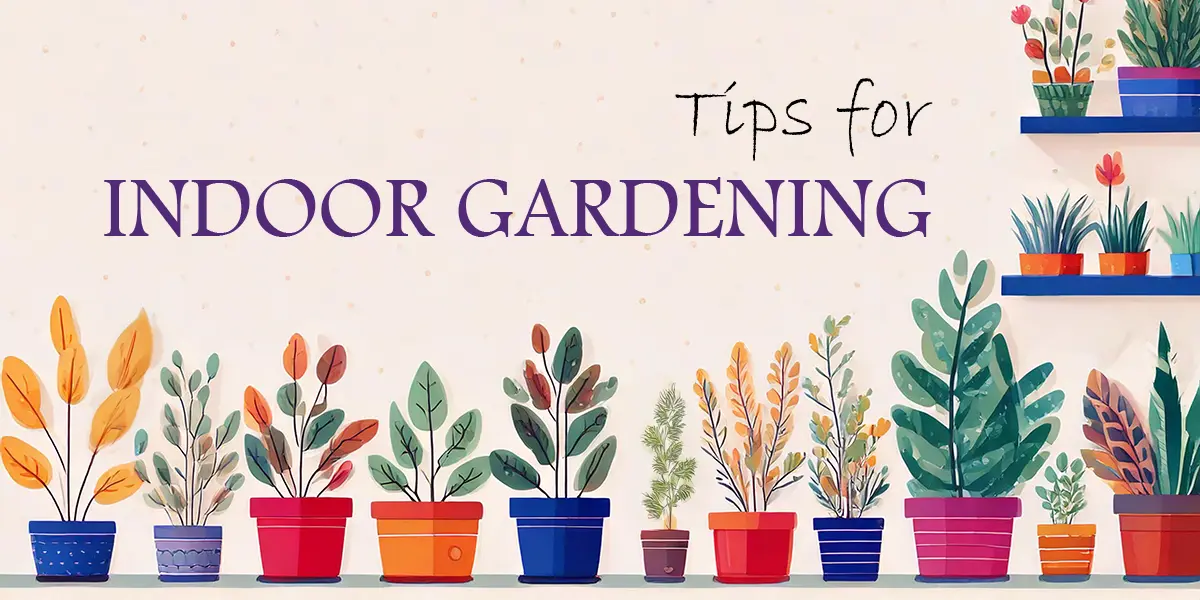It’s another cold, wet, and windy Saturday. You’re cooped up inside, lamenting the gloomy weather from the comfort of your Snuggie.
What should you do? Binge watch Netflix? You already did that yesterday while you were “telecommuting.”
Clean the house? Nah, plus it’s so tidy it could pass a Marine inspection.
If you can’t enjoy the outdoors, why not bring it indoors, where the climate is always warm and dry? Now’s the time to build that indoor garden you’ve always dreamed about and begin benefitting from fresh, organic produce year-round.

Tomatoes and herbs thrive under a grow lamp.
5 Reasons to Garden Indoors
- You have ready access to fresh produce free of pesticides or other harmful chemicals. Also, freshly picked veggies have a better nutrient profile than those picked a few days ago.
- You can garden all year, even during the hottest summer and coldest winter months.
- Plants are natural air purifiers. They remove toxins from the air and improve its overall quality.
- Gardening reduces stress and promotes relaxation. You can ditch the aromatherapy machine and pricey “specially formulated” capsules.
- Gardening is a one-time investment in supplies like pots, soil, and seeds. By growing your own produce, you’ll save money in the long run.
10 Tips for a Thriving Indoor Garden
1. Evaluate Light & Temperature
- Choose a spot with adequate natural light, such as near a south-facing window.
- If natural light is scarce or inconsistent, use grow lamps to ensure plants receive enough light for photosynthesis.
- Maintain a consistent temperature for optimal plant health, avoiding heat sources and drafty windows.
- Keep your plants in comfortable ambient temperatures to reduce stress and promote growth.
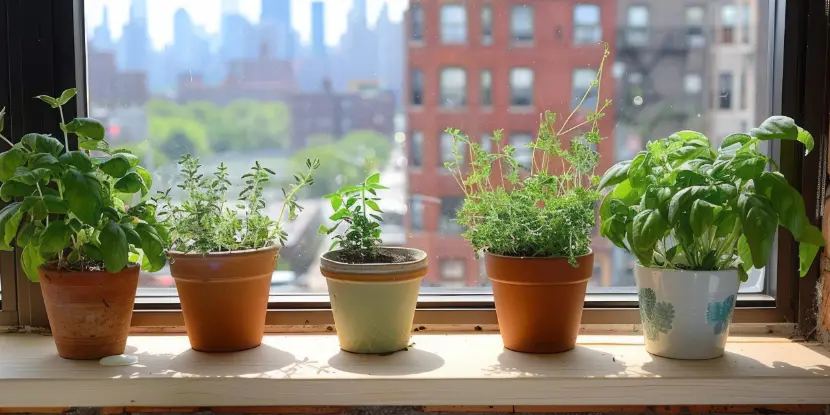
A south-facing window sill is ideal for light exposure.
2. Choose the Right Plants
- Consider your available space and lighting when selecting plants.
- Some popular options for indoor gardens include herbs, leafy greens, and easy-to-grow vegetables like cherry tomatoes or peppers.
- Opt for low-light tolerant plants like mint, parsley, or chives if you have limited light.
3. Use Quality Soil & Fertilizer
- Invest in high-quality potting soil with good drainage.
- Add organic fertilizer to ensure your plants receive essential nutrients.
- Use a liquid fertilizer diluted to half-strength every two weeks during the growing season.
4. Water Wisely
- Water plants when the top inch of soil is dry.
- Avoid overwatering, which can cause root rot and other issues.
- Use room temperature water to avoid shocking your plants.
- Hydroponic systems are ideal for indoor gardening, eliminating the need for soil and reducing water use.
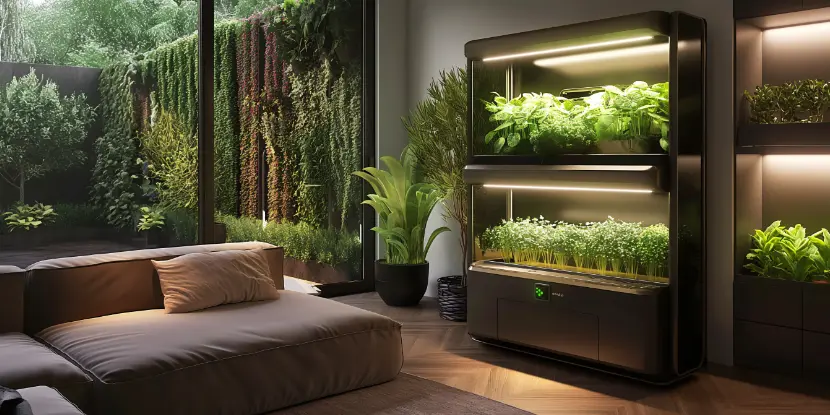
An indoor garden using hydroponics and grow lamps.
5. Use Quality Containers
- Choose containers with good drainage to prevent soggy roots.
- Repurpose items like mason jars, egg cartons, or old shoes as unique planters.
- Self-watering containers are a convenient option for busy gardeners.
6. Prune & Trim Regularly
- Check your plants for dead or damaged leaves and any signs of pests.
- Remove any affected areas immediately to prevent further damage.
- Regular pruning promotes healthy growth and helps shape your plants.
- Use clean gardening shears or scissors to avoid spreading disease or pests.
7. Monitor Humidity Levels
- Most indoor plants thrive in a humidity level between 40-60%.
- Increase humidity by placing trays with pebbles and water under your pots or using a humidifier.
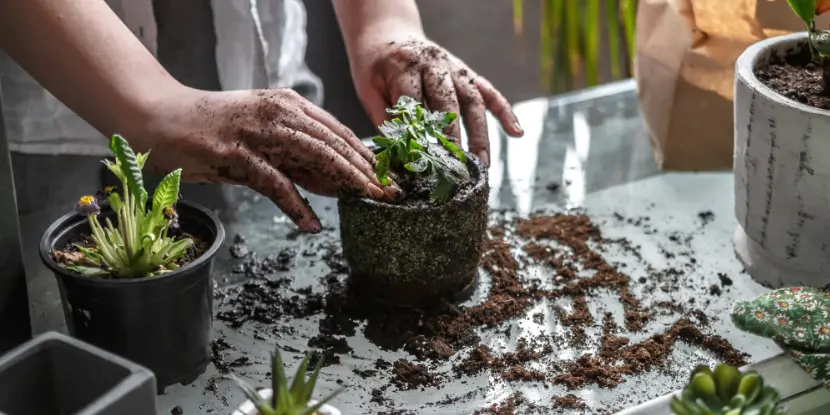
Use high-quality pots and potting soil for your indoor garden.
8. Rotate Your Plants
- Rotate your plants every few weeks to ensure they receive even light distribution.
- This will also prevent your plants from growing towards the light and becoming lopsided.
- If you have multiple plants, rotating them can also reduce competition for light and nutrients.
9. Keep Pests at Bay
- Regularly inspect your plants for pests like aphids, spider mites, or mealybugs.
- Use organic methods like neem oil or insecticidal soap to control them.
- Introducing beneficial insects like ladybugs or praying mantises can also keep pests under control.
10. Use Space Efficiently
- Optimize your space by using vertical gardening techniques like hanging baskets or shelves.
- Use windowsills and corners for smaller plants or herbs.
- Install a tiered plant stand to maximize space and enhance the aesthetics of your garden.
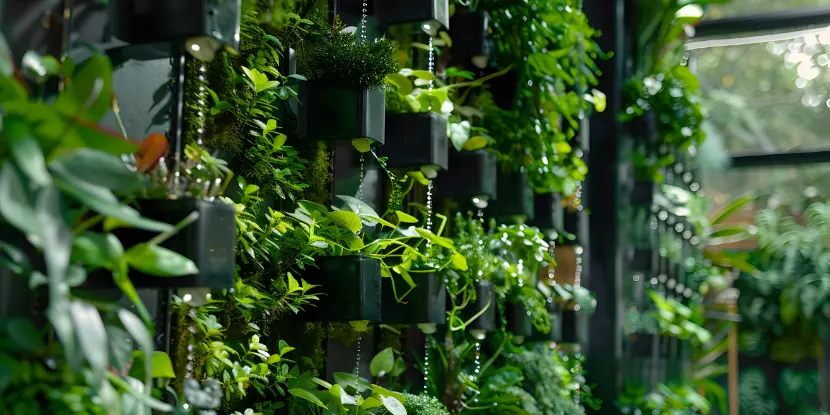
A vertical garden saves space and creates an attractive display.
FAQs: Tips for Indoor Gardening
Q: How often should I water my plants?
Water your plants when the top inch of soil is dry, which may vary depending on temperature and humidity levels.
Q: Can I use regular soil from my garden for indoor gardening?
No, it’s best to use high-quality potting soil designed for indoor plants. Regular garden soil can contain pests or diseases and lack good drainage.
Q: What are some low-light tolerant plants for indoor gardening?
Mint, parsley, chives, snake plants, and peace lilies are all low-light tolerant options for indoor gardens.
Q: How do I know if my plant gets too much light?
Signs of too much light include scorched or bleached leaves, yellowing, and leaf drop. Move your plant to a location with less direct sunlight, or use a sheer curtain to diffuse the light.
Q: What’s the best way to deal with overwatering?
Allow the soil to dry before watering again. If the problem persists, ensure pots have adequate drainage and consider repotting with fresh, well-draining soil.
Q: How can I naturally boost plant growth indoors?
Provide your plants with consistent care, including adequate light, proper hydration, regular pruning, and feeding with organic fertilizers. Compost tea and worm castings are excellent natural growth boosters.
Q: What precautions should I take when repotting my plants?
Choose a slightly larger pot with good drainage. Carefully remove the plant from its current pot and gently loosen the roots. Fill the new pot with fresh potting soil and water thoroughly after repotting.
Q: How do I prevent mold and mildew in my indoor garden?
Ensure good air circulation around plants, avoid overcrowding, and don’t overwater. Remove decaying plant material promptly and keep your garden area neat.

